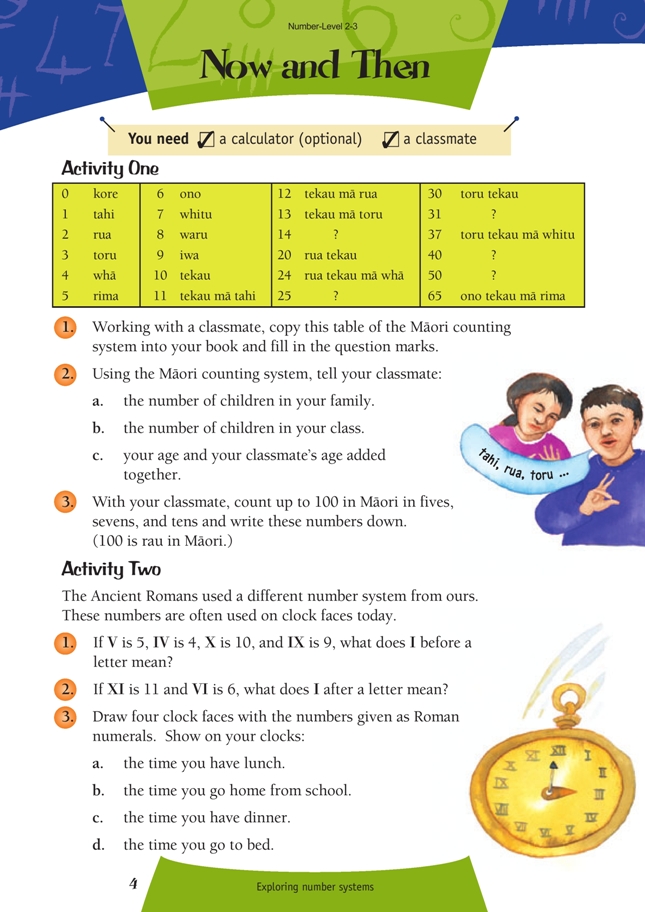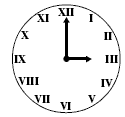This is a level 2 number activity from the Figure It Out series.
A PDF of the student activity is included.
Click on the image to enlarge it. Click again to close. Download PDF (170 KB)
explore Māori and Roman number system
A calculator (optional)
A classmate
Activity One
Investigating the number systems of different cultures can help students to recognise the vagaries of the English language. It also raises students’ awareness of a major culture in New Zealand and encourages them to appreciate and value the various cultures in New Zealand.
Many languages, such as Māori and Japanese, have spoken words for numbers that reveal the place value structure of the numbers. For example, “tekau mā rua” translates to “ten and two”. This is clearer than the word “twelve”, which gives little clue as to the structure of the number it represents.
For many students, making a poster of the numbers to twenty and decades thereafter will be enlightening. (A decade is a set of 10 or a period of 10 years.).gif)
Students may realise that the suffix “teen” is equivalent to “ten and” and that the suffix “ty” is equivalent to “tens”.
Activity Two
The Roman numerals worked on an additive system and did not use place value. Sixteen is written as XVI, which translates to 10 (X) plus five (V) plus one (I), and 116 was written as CXVI, which means 100 (C) plus 10 (X) plus five (V) plus one (I).
The Roman numerals on clocks are very common (for example, on Big Ben in London). Note that IX means one before 10 (nine), and IV means one before five (four). Students may wish to explore how the Romans wrote larger numbers using this system.
Answers to Activities
Activity One
1. 14: tekau mā whā
25: rua tekau mā rima
31: toru tekau mā tahi
40: whā tekau
50: rima tekau
2. Answers will vary.
3. 5s: rima, tekau, tekau mā rima, rua tekau, rua tekau mā rima, toru tekau, toru tekau mā rima, whā tekau, whā tekau mā rima, rima tekau, rima tekau mā rima, ono tekau, ono tekau mā rima, whitu tekau, whitu tekau mā rima, waru tekau, waru tekau mā rima, iwa tekau, iwa tekau mā rima, rau
7s: whitu, tekau mā whā, rua tekau mā tahi, rua tekau mā waru, toru tekau mā rima, whā tekau mā rua, whā tekau mā iwa, rima tekau mā ono, ono tekau mā toru, whitu tekau, whitu tekau mā whitu, waru tekau mā whā, iwa tekau mā tahi, iwa tekau mā waru
10s: tekau, rua tekau, toru tekau, whā tekau, rima tekau, ono tekau, whitu tekau, waru tekau, iwa tekau, rau
Activity Two
1. Take away one.
2. Add one.
3. Answers will vary.

